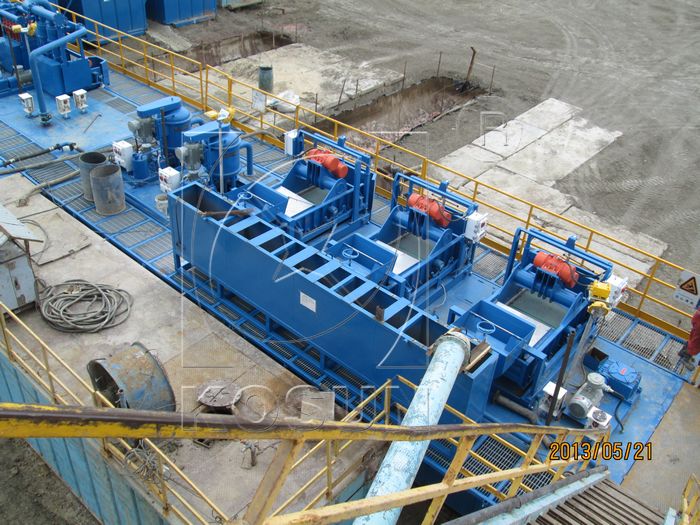Drilling fluids solids control is a technique used in a drilling rig to separate the solids in the drilling fluids that are crushed by the drill bits and carried out of the well surface. Normally, a solid control system contains five stages: the mud tank, shale shaker, vacuum degasser, desander, desilter, and drilling centrifuge. The shale shaker is used to separate big solids with diameter above 75μm, the desander addresses solids from 45-74μm , and the desilter segregates solids between 15-44μm. Sometimes the desander and desilter are combined as one high efficiency mud cleaner. When air enters the drilling fluids, a vacuum degasser is used to separate the air. If no air in the mud, the degasser would work as a big agitator. All these stages are mounted on the top of the mud tank. After separating the solids, the clean mud can be pumped into the borehole again.

Separation point of drilling fluids:
The separation point for drilling fluids is defined as separation characteristics shown by purification equipment in the given time. It should take the properties of both purification equipment and drilling fluids into account to evaluate separation point data. The curve of separation can be drawn on collected data, illustrating the equipment’s removing rates of certain size at certain time in data collection. Accordingly, it is the function for solids’ physical property, diameter distribution, equipment state and mud properties.
Separation point of purification equipment:
Separation point of drilling fluids solids control equipment comes out from comparing mass velocities of solid phases in different sizes and identical size discharged. Injection velocity, discharge velocity and underflow velocity are needed to test certain equipment. Mass injection velocity can be achieved if injection flow density is multiplied by volume flow rate while mass discharge velocity is given by the multiplication of discharge flow rate by volume flow rate. Apparently, aggregate discharge velocity should be the same with mass injection velocity. Usually, discharge flow is deserted while the rest stays in the mud. Prior to measuring the solid phase in liquid flows, it is primary to see if mass balance equation is well fit, i.e, if both volume velocity and mass velocity reach balance.







